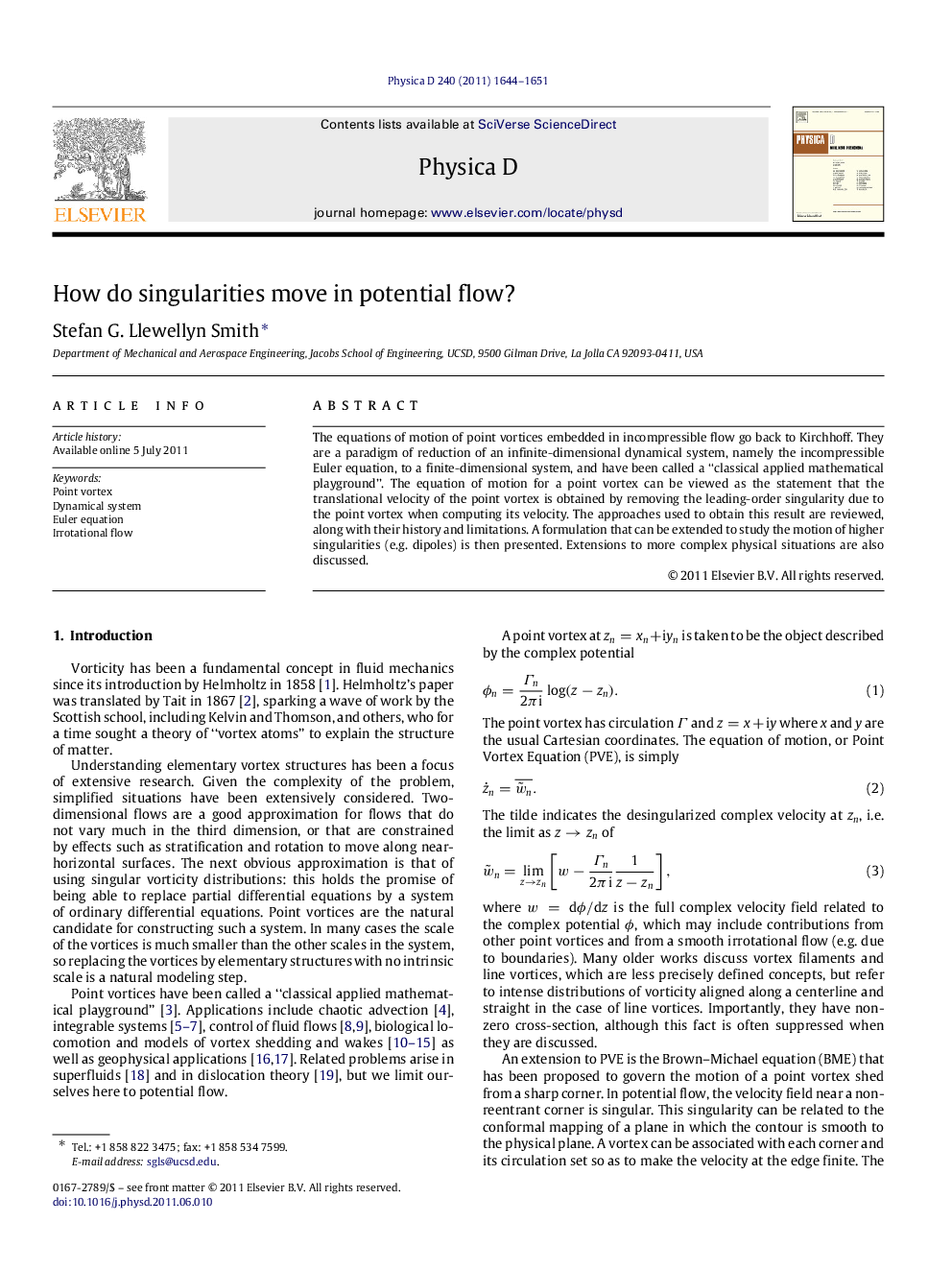| Article ID | Journal | Published Year | Pages | File Type |
|---|---|---|---|---|
| 1898632 | Physica D: Nonlinear Phenomena | 2011 | 8 Pages |
The equations of motion of point vortices embedded in incompressible flow go back to Kirchhoff. They are a paradigm of reduction of an infinite-dimensional dynamical system, namely the incompressible Euler equation, to a finite-dimensional system, and have been called a “classical applied mathematical playground”. The equation of motion for a point vortex can be viewed as the statement that the translational velocity of the point vortex is obtained by removing the leading-order singularity due to the point vortex when computing its velocity. The approaches used to obtain this result are reviewed, along with their history and limitations. A formulation that can be extended to study the motion of higher singularities (e.g. dipoles) is then presented. Extensions to more complex physical situations are also discussed.
► The justification for the equation governing point vortex motion is examined. ► The original argument to Helmholtz is still presented in most references. ► A method using a generalized momentum flux argument is presented. ► Issues with regularization remain.
